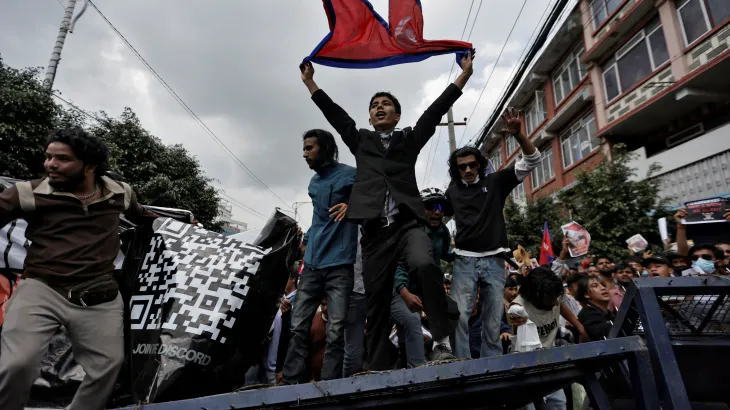At least 19 people have been killed and dozens injured in Nepal after nationwide protests against political corruption and a government-imposed social media ban escalated into violent clashes with security forces.
Generation Z Leads the Protests
Thousands of young demonstrators, calling themselves Generation Z, gathered near Nepal’s parliament in Kathmandu to oppose the ban on platforms such as Facebook, X, YouTube and Instagram. Protesters also demanded an end to widespread corruption and accused the government of adopting an authoritarian stance.
Placards carried messages like “Enough is enough” and “End corruption”. Protester Sabana Budathoki told the BBC:
“Rather than the social media ban, I think everyone’s focus is on corruption. We want our country back.”
Deadly Crackdown in Kathmandu and Beyond
Police used water cannons, batons, rubber bullets and tear gas after crowds breached restricted areas. Seventeen people were killed in the capital, while two more deaths were reported in Itahari. Tear gas even entered a hospital treating the injured, disrupting medical care.
Authorities later imposed a curfew around parliament and deployed army units to restore order.
Political Fallout and International Response
Home Minister Ramesh Lekhak resigned on Monday evening, accepting moral responsibility for the deaths. The United Nations Human Rights Office has urged a “prompt and transparent investigation” and warned against excessive use of force.
Why Social Media Was Banned
The Nepali government insists it is not banning social media outright, but requiring platforms to register under local law to combat fake news, hate speech and online fraud. Last week, 26 platforms were blocked, though some users have bypassed restrictions using VPNs. Two services have since been reinstated after registering with authorities.
Outlook
With growing frustration over corruption and restrictions on free expression, protests are unlikely to subside soon. Nepal’s leaders now face mounting pressure at home and abroad to restore calm while addressing citizens’ demands.

